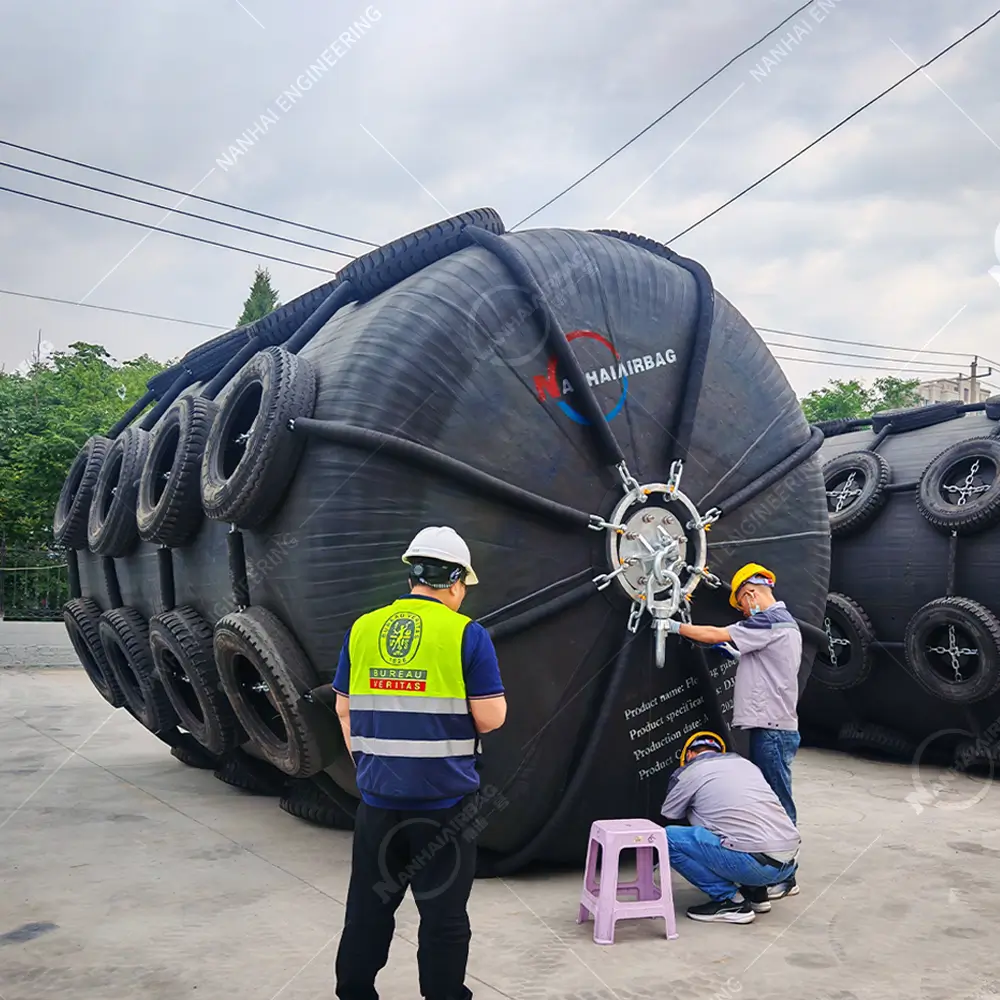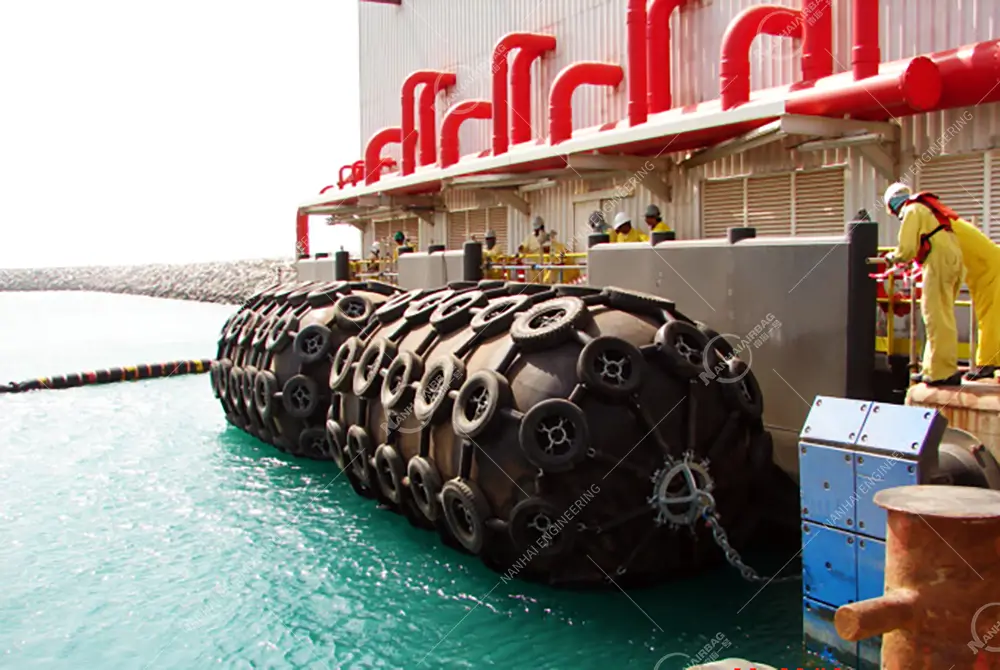Vulcanization Process Of Pneumatic Rubber Fenders
06/06/2025What are the causes of damage to rubber fenders?
06/06/2025Floating Foam Fenders And Pneumatic Fenders
Floating foam fenders and pneumatic fenders play a key role in port operations and ship docking. Their quality affects safety, durability, and maintenance costs. At NANHAI, we pay close attention to the materials we use. Whether we are making floating rubber fenders or pneumatic fenders, we always choose high-performance materials to ensure reliable and safe use.
Floating Foam Fenders: Why We Use EVA Foam
Floating foam fenders from NANHAI have an outer and inner layer made of rubber, with EVA closed-cell foam inside. This foam gives the fender excellent floating ability and energy absorption.
We chose EVA (ethylene-vinyl acetate) instead of traditional PE foam because it performs better in several ways:
- It doesn’t absorb water, so the fender stays afloat.
- It absorbs shock better and returns to its shape quickly.
- It resists tearing and wearing down, even with heavy use.
- It works well in extreme temperatures, from -40℃ to +40℃.
These features make EVA foam ideal for use in floating docks, shipyards, and harsh marine environments. It also makes the fenders more reliable and easier to maintain.

Pneumatic Fenders: The Strength Behind D3 Nylon Cord Fabric
The inner structure of pneumatic fenders relies on strong reinforcement layers. At NANHAI, we use D3 grade nylon cord fabric instead of the common D2 type. This choice makes our fenders stronger and safer.
Why Nylon is Better than Polyester
- Nylon is more elastic, so it stretches better and reduces the chance of breakage under pressure.
- Polyester is cheaper, but not as durable under repeated stress.
D2 vs D3 Cord Fabric
- D2 yarn has a tensile strength of 212N (about 21kg).
- D3 yarn reaches 313N (about 31kg).
- We use only D3 in our pneumatic fenders to ensure better performance and longer life.
Thanks to this stronger fabric, our fenders handle high-pressure impacts better, resist damage, and keep working longer, especially in harsh marine conditions.

How Better Materials Improve Fender Performance
By using EVA foam and D3 nylon cords, we improve every part of the fender’s job:
- More energy absorption, less damage to ships or docks.
- Longer service life, fewer replacements, and lower costs.
- Adaptability to harsh weather, including cold, heat, and salt water.
- Low maintenance, meaning less worry for users.
Why Trust NANHAI?
At NANHAI, we believe good materials make great products. We don’t cut corners. Every EVA foam block and D3 fabric layer we use reflects our promise of high quality.
We design and build fenders that can handle real-world marine challenges. Our goal is to give customers safe, durable, and easy-to-use solutions they can trust.
Contact NANHAI for Professional Fender Solutions
Need fenders that are tough, low-maintenance, and ready for all conditions? Talk to NANHAI. We offer custom fender solutions and full support, from design to delivery.
